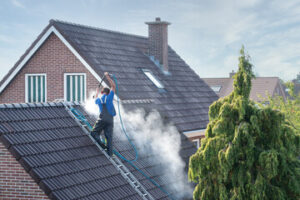A citation is a form of identification that indicates where a piece of information came from. Citations are used in research papers to show credit for the authors and to allow the reader to locate the source themselves.

Different citation styles have unique elements that distinguish them from each other, but most include author name, article title, date of publication and page numbers.
Search engine optimization is one of the most important parts of your digital marketing strategy. It’s how you get your website to show up in search results for queries on Google (or other search engines) without paying for ads.
SEO is a complex process, and it takes time to see results. However, if you do it right, it can help you drive more traffic and sales for your business. There are three main elements of SEO: technical, content, and backlinks. Let’s take a closer look at each of these.
Technical SEO is the process of optimizing a website to make it more search engine-friendly. This includes fixing any errors that might be preventing search engines from crawling and indexing pages. It also involves improving the site’s navigation, structure, and mobile usability.
Content SEO is the process of optimizing web content to make it more relevant and visible to search engines. It includes conducting keyword research to identify the most valuable and relevant terms, and then strategically incorporating them into your content. It also involves creating high-quality, engaging, and useful content that your target audience will want to read and share.
International SEO is the process of optimizing a web site to improve its visibility and ranking in search engine results pages for users in different countries or regions. This can be done by using geotargeting settings in search engine tools or by implementing hreflang tags on the website.
Having a good SEO strategy is crucial to the success of your business. It helps you rank higher on SERPs and attracts more qualified leads. It’s also an effective way to grow your business and increase your revenue.
As the world becomes increasingly digital, SEO has become an essential part of any successful online business. Whether you’re running a local retail shop or a global enterprise, having a well-optimized website and a strong SEO strategy are critical to your success. If you’re ready to start attracting more qualified leads and growing your business, contact us today at West County Net for a free SEO audit!
Keyword Research
Citations amplify SEO efforts by building credibility and authority through a business’s online presence. As a result, they can also influence customer perceptions and ultimately determine their interactions with a brand. However, they must be done correctly to ensure they deliver the highest possible return on investment. The best way to do this is by identifying the keywords that people use to search for content related to your business.
In order to do this, you must understand your audience and their needs, which requires extensive research. A good starting point is to use a tool like Google Keyword Planner, Ahrefs, or SEMrush. These tools will help you find the most popular keywords that relate to your business and how much competition there is for them. Once you’ve found your best keywords, you can then narrow them down by location and intent. This will help you target a more specific audience and increase the likelihood of converting leads into customers.
Another aspect of effective citations is consistency and accuracy. To avoid losing potential customers, it is crucial that a business’s NAP information (Name, Address, Phone Number) stays consistent across all directories. Even minor differences, such as abbreviations and spelling errors, can muddle the perception of a business and confuse search engines. In addition, it is important that businesses regularly audit their citations to ensure they have the latest information and remove any outdated listings.
Lastly, it is important to use citations on directories that are relevant to your business. This will ensure that your business is visible to users searching for a product or service in your area. This will increase your visibility for “near me” searches, which account for 46% of all Google searches.
Additionally, citations that include images, contact information, and business hours are more likely to appear in local search results than those that do not. This is because search engines look at the context of a query to determine if it’s relevant to a user’s intent.
Content Creation
Content creation is a key part of any SEO strategy, as it can increase brand awareness and establish your company as an authority in your industry. It can also drive traffic to your website and help attract potential customers.
But before you can create great content, it’s important to understand your audience and what they want from you. This will help you to generate ideas for your content, and determine what type of content will be most effective.
You’ll want to focus on creating content that answers your audiences’ questions and concerns, and addresses any pain points. This will help you to build trust with your audience, and will ultimately lead to customer loyalty and sales. Creating useful and relevant content will also help to improve your SEO ranking, as Google rewards websites that regularly publish fresh, quality content.
There are many different formats you can use for your content, but you’ll need to decide what your target audience is most interested in and what kind of content they would find most helpful. You may need to conduct some research into this, including analyzing competitor websites and performing keyword research to see what topics are trending in your industry.
Once you know what your goal is, it’s time to start creating your content. It’s important to have a clear process, and ensure the right people are involved at each stage. This will save you a lot of time, as it will prevent unnecessary repetition and inconsistency. It will also help to avoid conflicting opinions and ensure that the content is delivered on time.
The last thing you want is to waste your marketing budget on creating content that doesn’t deliver on its promises. That’s why it’s so important to have a well-defined strategy and clear processes in place before you begin.
A clear workflow will also help to streamline the content creation process, ensuring that your team members are aware of their role in the process and the expectations for each piece of content. This will eliminate confusion, and it will reduce the amount of time that is spent on repetitive tasks such as reviewing, revisions, and approvals.
Link Building
Many SEO experts believe that link building is a crucial aspect of effective SEO. When done properly, it can improve search engine ranking, boost trustworthiness, and increase organic traffic. However, there are a few things that you should keep in mind when building links. For example, it is important to only link to quality websites. You should also avoid paying for links or engaging in other manipulative tactics, which can lead to penalties from Google. By understanding the basics of link building, seeking advice from a Squarespace SEO agency, and avoiding common mistakes, you can maximize the benefits of this tactic.
The best way to get started with citation building is by creating a profile on Google My Business. This will allow you to manage all of your local listings in one place and update them when necessary. In addition, it can help you to rank higher in local searches. Make sure to include accurate NAP information, such as your name, address, and phone number (NAP).
Citation building is an ongoing process that requires consistency and diligence. It can take time to build a robust citation profile, but it’s worth the effort in the long run. The more consistent and accurate your citations, the more likely you are to see an increase in search engine traffic and customers.
While some people may claim that citation building is dead, it’s important to remember that it’s only one component of a comprehensive marketing strategy. In order to be successful, you must combine it with other initiatives such as content creation, great customer service, and social media.
If you’re new to the world of SEO, it can be helpful to create a plan that outlines your goals for the coming year. This will help you stay on track and ensure that you’re focusing your efforts in the right direction. For instance, if your goal is to increase traffic by 20%, you should set specific, measurable objectives that will help you achieve this.
It’s also important to be realistic about the timeline for achieving your objectives. While some businesses can see immediate results from their SEO efforts, this is not the norm. It typically takes a few months for SEO to have an impact on organic traffic.







